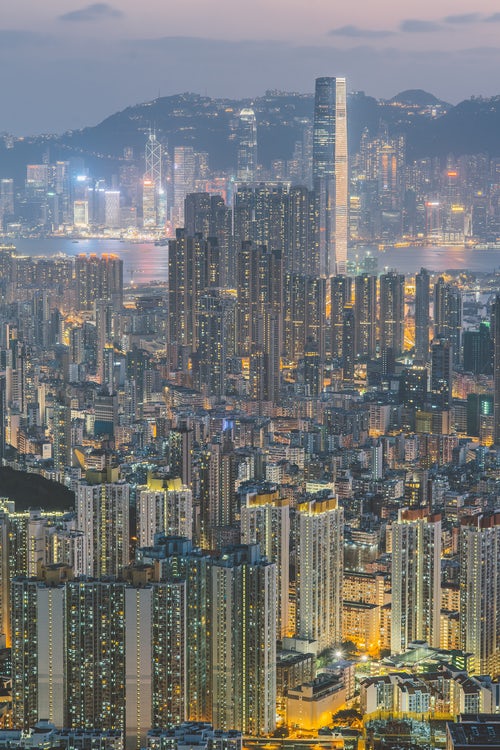
Expanding Horizons: Hong Kong
Where East Meets West: Five Things You May Not Know about Hong Kong
With a condensed population of 7.5 million, sub-tropical climate, nightly city laser-show and more Rolls Royce’s per capita than anywhere else, Hong Kong is a melting pot of east meets west. In fact, even today its tallest buildings are still constructed using bamboo scaffolding. Below, you’ll find other unusual aspects about this interesting city-state.
1. Not Just a City
Hong Kong is not just one big city. It’s comprised of Hong Kong Island, Lantau Island, the Kowloon Peninsula and the New Territories, as well as 262 outlying islands – most of which are uninhabited. And while it’s true, Hong Kong has twice as many skyscrapers as New York and the district of Mongkok is said to be the most densely populated globally; heading out to the countryside is a popular leisure pursuit.
In fact, 40 per cent of Hong Kong is country park space and home to monkeys, snakes and giant spiders. Off of the island of Lantau you might even be lucky enough to glimpse a pink dolphin. Parks aside, even on mega-busy Hong Kong Island you can catch the rickety old tram up the funicular railway to The Peak and walk the Peak Circle. Renowned for being one of the world’s most scenic walks, it was once dubbed, ‘Walk of the Fool’ as it starts and ends in the same spot.
2. Lantau: Big Buddha, Disneyland and a Fishing Village
The well-accessed, populated island of Lantau is a prime example of the East Meets West paradigm. Above the forests in the island’s centre, tourists and pilgrims go to see the famous Big Buddha and Po Lin Monastery. Erected in 1993, the 34 metre bronze statue faces north to look over the Chinese people.
Meanwhile, as Mickey Mouse fans flock to Disneyland in Lantau’s north-east, tourists heading over to the island’s west coast can experience an entirely different side of Hong Kong when visiting Tai O. This traditional village is home to the Tanka, fishing-people. For generations they have lived in houses built on stilts above the tidal flats. A manually operated drawbridge spans the creek here.
3. Hong Kong’s Feng Shui Means Business
Hong Kong is said to have naturally excellent Feng Shui, which some say accounts for its wealth. This ancient spiritual practice of placing objects and buildings in a certain way is meant to attract health, prosperity and good luck. It is not only used by Chinese residents at home, either. Consultants are often called upon by big business to ensure the boss is seated in the right spot. Advice on where to put the reception desk can also be important.
In fact, the HSBC building in Central’s business district includes many Feng Shui principles. One of these are two cannon-shaped rods is positioned on its roof, placed to deflect the negative energy emanating from neighbouring Bank of China’s building (known for its bad Feng Shui design). It’s said that when the Bank of China’s Building was completed back in 1989, HSBC’s share price dropped to an historical low. The rods were erected to counteract the negative energy. This is said to have improved performance and kept things in check.
4. The Amazingly Efficient MTR (Mass Transit Railway)
Though privately owned, the local government is the majority shareholder of the MTR. With five million passengers to transport daily, (more than London and almost as many as New York), this highly efficient railway system of 80 stations has an amazing 99% punctuality rate. No excuses here about your train being delayed! To get around town, you’ll need to have topped up your Octopus card – which you can also use to buy your morning coffee, board a bus or pay for parking.
5. World’s Longest Escalator!
Made in 1993, the Central-Mid-Levels outdoor escalator stretches half a mile. Costing a massive 30 million US dollars to construct, it now carries 78,000 commuters and tourists daily up through the CBD’s mid-levels, narrow streets and hip bars and districts. Its 18 reversible escalators and three travellators are particularly handy for counteracting the hilly climbs and humid climate and what’s more, it’s free to boot.
Sources
https://www.theguardian.com/cities/2018/jul/19/hong-kong-the-city-still-shaped-by-feng-shui
https://countrymeters.info/en/Hong_Kong
https://www.hong-kong-traveller.com/hong-kong-religion.html
http://www.discoverhongkong.com/uk/see-do/culture-heritage/living-culture/feng-shui.jsp
https://edition.cnn.com/travel/article/hong-kong-worlds-longest-escalator-system/index.html
